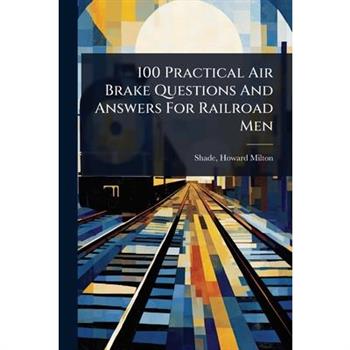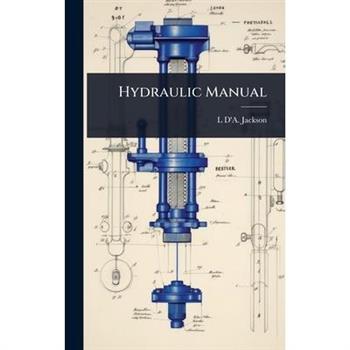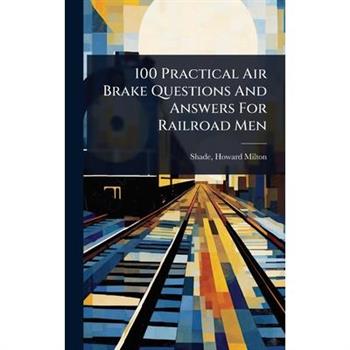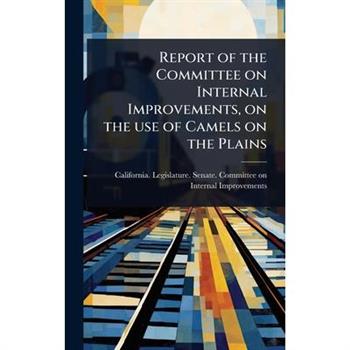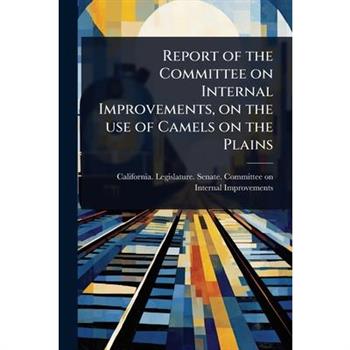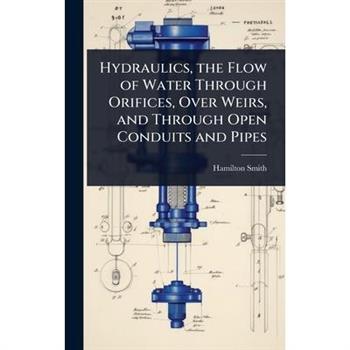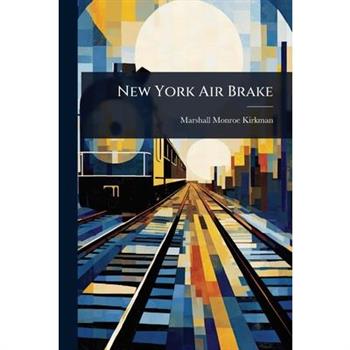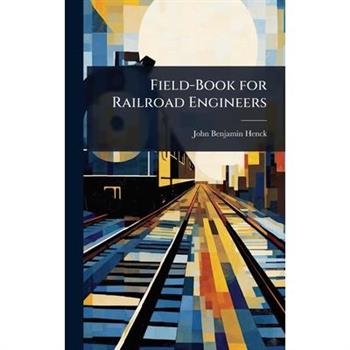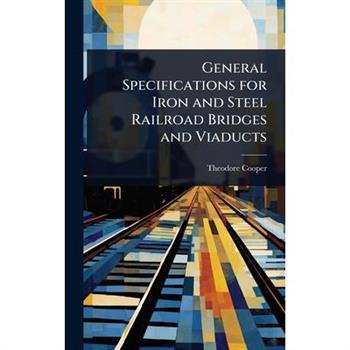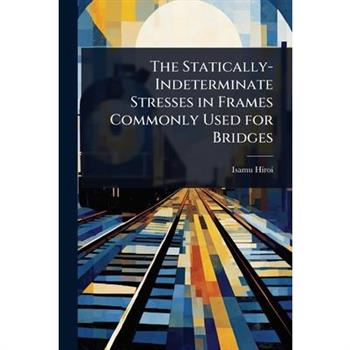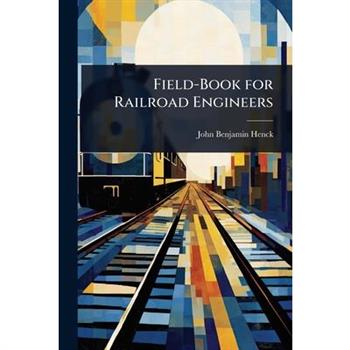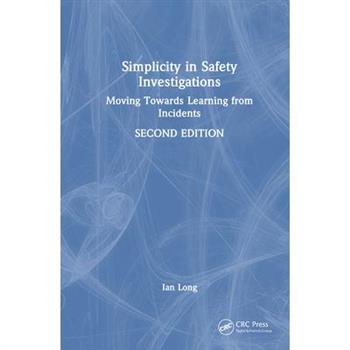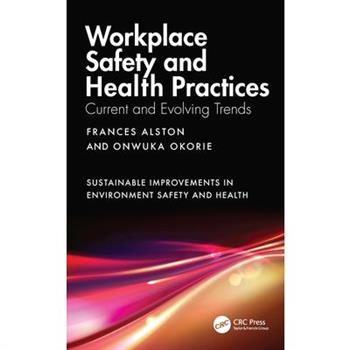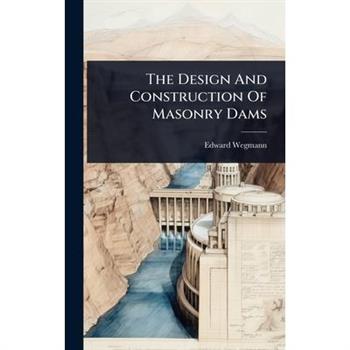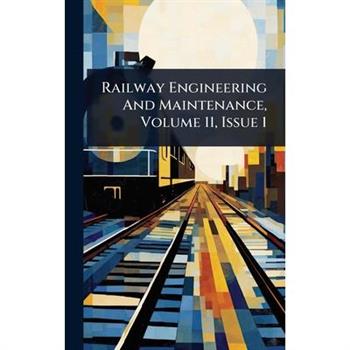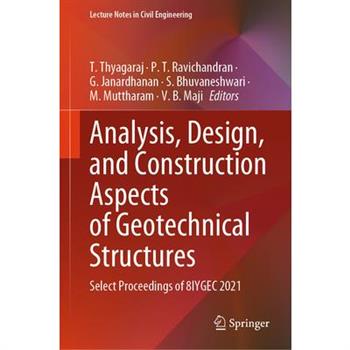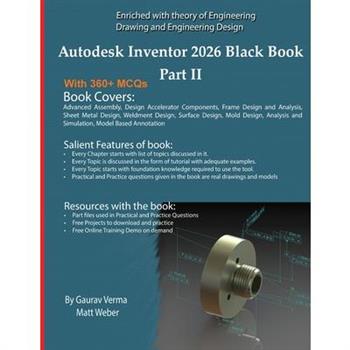Concrete in Highway Construction
"Concrete in Highway Construction" (1916) is a comprehensive guide to the use of concrete in building roads and highways. Authored by Paul Caleb Newell, this book delves into the essential aspects of concrete mixture, application, and maintenance in civil engineering projects. It offers detailed insights into the selection of materials, ensuring durability and structural integrity in highway construction. This book is invaluable for civil engineers, contractors, and students seeking a historical perspective on concrete usage in infrastructure development. Its enduring relevance lies in providing foundational knowledge of material science applied to vital transportation systems.This work has been selected by scholars as being culturally important, and is part of the knowledge base of civilization as we know it. This work was reproduced from the original artifact, and remains as true to the original work as possible. Therefore, you will see the original copyright references, library stamps (as most of these works have been housed in our most important libraries around the world), and other notations in the work.This work is in the public domain in the United States of America, and possibly other nations. Within the United States, you may freely copy and distribute this work, as no entity (individual or corporate) has a copyright on the body of the work.As a reproduction of a historical artifact, this work may contain missing or blurred pages, poor pictures, errant marks, etc. Scholars believe, and we concur, that this work is important enough to be preserved, reproduced, and made generally available to the public. We appreciate your support of the preservation process, and thank you for being an important part of keeping this knowledge alive and relevant.
100 Practical Air Brake Questions And Answers For Railroad Men
璽€œ100 Practical Air Brake Questions And Answers For Railroad Men璽€ is a comprehensive guide designed to educate and assist railroad personnel in understanding and troubleshooting air brake systems. Originally published in 1913, this book offers a unique glimpse into the early days of railroad technology and provides valuable insights into the fundamental principles of air brake operation.Authored by Howard Milton Shade, this book presents a series of practical questions and detailed answers covering various aspects of air brake systems. From basic components to complex troubleshooting scenarios, this guide serves as a valuable resource for both novice and experienced railroad workers. The clear and concise format makes it easy to understand the material and apply the knowledge in real-world situations.This book is an essential addition to any railroad enthusiast's collection, offering a historical perspective on the evolution of air brake technology and providing a solid foundation for understanding modern railroad systems.This work has been selected by scholars as being culturally important, and is part of the knowledge base of civilization as we know it. This work was reproduced from the original artifact, and remains as true to the original work as possible. Therefore, you will see the original copyright references, library stamps (as most of these works have been housed in our most important libraries around the world), and other notations in the work.This work is in the public domain in the United States of America, and possibly other nations. Within the United States, you may freely copy and distribute this work, as no entity (individual or corporate) has a copyright on the body of the work.As a reproduction of a historical artifact, this work may contain missing or blurred pages, poor pictures, errant marks, etc. Scholars believe, and we concur, that this work is important enough to be preserved, reproduced, and made generally available to the public. We appreciate your support of the preservation process, and thank you for being an important part of keeping this knowledge alive and relevant.
Clays And Shales Of Michigan
Delve into the detailed analysis of Michigan's clays and shales with 'Clays And Shales Of Michigan, ' a comprehensive study by H. Ries. This Volume 8 explores the properties and potential uses of these vital geological resources. Accompanied by illustrative plates and figures, this work provides valuable insights into the composition, distribution, and practical applications of Michigan's clay and shale deposits. Focusing on their role in various industries, from construction to ceramics, this book offers a historical perspective on the exploitation and management of these natural resources. Discover the geological characteristics that make Michigan's clays and shales unique and understand their significance in the state's industrial development. A must-read for geologists, engineers, and anyone interested in the material resources of Michigan.This work has been selected by scholars as being culturally important, and is part of the knowledge base of civilization as we know it. This work was reproduced from the original artifact, and remains as true to the original work as possible. Therefore, you will see the original copyright references, library stamps (as most of these works have been housed in our most important libraries around the world), and other notations in the work.This work is in the public domain in the United States of America, and possibly other nations. Within the United States, you may freely copy and distribute this work, as no entity (individual or corporate) has a copyright on the body of the work.As a reproduction of a historical artifact, this work may contain missing or blurred pages, poor pictures, errant marks, etc. Scholars believe, and we concur, that this work is important enough to be preserved, reproduced, and made generally available to the public. We appreciate your support of the preservation process, and thank you for being an important part of keeping this knowledge alive and relevant.
Hydraulic Manual
Hydraulic Manual, by L. D'A. Jackson, offers a comprehensive treatise on the principles and applications of hydraulics. Originally published in 1875, this manual provides detailed explanations and practical guidance for engineers and students involved in the study and application of water power. The book covers a wide range of topics, including the laws of fluid motion, the design and construction of hydraulic machinery, and the calculation of water flow in various engineering contexts. This historical text provides valuable insights into the state of hydraulic engineering during the late 19th century. "Hydraulic Manual" remains a relevant resource for those interested in the historical development of hydraulic engineering and its fundamental principles.This work has been selected by scholars as being culturally important, and is part of the knowledge base of civilization as we know it. This work was reproduced from the original artifact, and remains as true to the original work as possible. Therefore, you will see the original copyright references, library stamps (as most of these works have been housed in our most important libraries around the world), and other notations in the work.This work is in the public domain in the United States of America, and possibly other nations. Within the United States, you may freely copy and distribute this work, as no entity (individual or corporate) has a copyright on the body of the work.As a reproduction of a historical artifact, this work may contain missing or blurred pages, poor pictures, errant marks, etc. Scholars believe, and we concur, that this work is important enough to be preserved, reproduced, and made generally available to the public. We appreciate your support of the preservation process, and thank you for being an important part of keeping this knowledge alive and relevant.
Clays And Shales Of Michigan
Delve into the detailed analysis of Michigan's clays and shales with 'Clays And Shales Of Michigan, ' a comprehensive study by H. Ries. This Volume 8 explores the properties and potential uses of these vital geological resources. Accompanied by illustrative plates and figures, this work provides valuable insights into the composition, distribution, and practical applications of Michigan's clay and shale deposits. Focusing on their role in various industries, from construction to ceramics, this book offers a historical perspective on the exploitation and management of these natural resources. Discover the geological characteristics that make Michigan's clays and shales unique and understand their significance in the state's industrial development. A must-read for geologists, engineers, and anyone interested in the material resources of Michigan.This work has been selected by scholars as being culturally important, and is part of the knowledge base of civilization as we know it. This work was reproduced from the original artifact, and remains as true to the original work as possible. Therefore, you will see the original copyright references, library stamps (as most of these works have been housed in our most important libraries around the world), and other notations in the work.This work is in the public domain in the United States of America, and possibly other nations. Within the United States, you may freely copy and distribute this work, as no entity (individual or corporate) has a copyright on the body of the work.As a reproduction of a historical artifact, this work may contain missing or blurred pages, poor pictures, errant marks, etc. Scholars believe, and we concur, that this work is important enough to be preserved, reproduced, and made generally available to the public. We appreciate your support of the preservation process, and thank you for being an important part of keeping this knowledge alive and relevant.
100 Practical Air Brake Questions And Answers For Railroad Men
璽€œ100 Practical Air Brake Questions And Answers For Railroad Men璽€ is a comprehensive guide designed to educate and assist railroad personnel in understanding and troubleshooting air brake systems. Originally published in 1913, this book offers a unique glimpse into the early days of railroad technology and provides valuable insights into the fundamental principles of air brake operation.Authored by Howard Milton Shade, this book presents a series of practical questions and detailed answers covering various aspects of air brake systems. From basic components to complex troubleshooting scenarios, this guide serves as a valuable resource for both novice and experienced railroad workers. The clear and concise format makes it easy to understand the material and apply the knowledge in real-world situations.This book is an essential addition to any railroad enthusiast's collection, offering a historical perspective on the evolution of air brake technology and providing a solid foundation for understanding modern railroad systems.This work has been selected by scholars as being culturally important, and is part of the knowledge base of civilization as we know it. This work was reproduced from the original artifact, and remains as true to the original work as possible. Therefore, you will see the original copyright references, library stamps (as most of these works have been housed in our most important libraries around the world), and other notations in the work.This work is in the public domain in the United States of America, and possibly other nations. Within the United States, you may freely copy and distribute this work, as no entity (individual or corporate) has a copyright on the body of the work.As a reproduction of a historical artifact, this work may contain missing or blurred pages, poor pictures, errant marks, etc. Scholars believe, and we concur, that this work is important enough to be preserved, reproduced, and made generally available to the public. We appreciate your support of the preservation process, and thank you for being an important part of keeping this knowledge alive and relevant.
Report of the Committee on Internal Improvements, on the use of Camels on the Plains
This is a report from the California State Senate's Committee on Internal Improvements, dating back to 1855. It delves into the feasibility and potential advantages of utilizing camels for transportation across the vast plains of the American West. The report examines the practical considerations, logistical challenges, and anticipated benefits of introducing camels as a mode of transport in a region where traditional methods faced significant limitations.The document offers a unique glimpse into the innovative approaches considered during the expansion and development of the American West, showcasing an unusual but potentially transformative solution to the difficulties of traversing long distances and challenging terrain. It provides valuable insights into the transportation strategies, technological considerations, and animal domestication experiments of the mid-19th century.This work has been selected by scholars as being culturally important, and is part of the knowledge base of civilization as we know it. This work was reproduced from the original artifact, and remains as true to the original work as possible. Therefore, you will see the original copyright references, library stamps (as most of these works have been housed in our most important libraries around the world), and other notations in the work.This work is in the public domain in the United States of America, and possibly other nations. Within the United States, you may freely copy and distribute this work, as no entity (individual or corporate) has a copyright on the body of the work.As a reproduction of a historical artifact, this work may contain missing or blurred pages, poor pictures, errant marks, etc. Scholars believe, and we concur, that this work is important enough to be preserved, reproduced, and made generally available to the public. We appreciate your support of the preservation process, and thank you for being an important part of keeping this knowledge alive and relevant.
General Specifications for Iron and Steel Railroad Bridges and Viaducts
This volume contains the "General Specifications for Iron and Steel Railroad Bridges and Viaducts," a comprehensive guide for engineers and builders involved in the construction and maintenance of railway infrastructure. Authored by Theodore Cooper, a prominent figure in bridge engineering, these specifications provide detailed standards for the design, fabrication, and erection of iron and steel bridges and viaducts intended for railroad use. Originally published in the late 19th and early 20th centuries, these specifications reflect the best practices of the time and offer invaluable insights into the engineering principles that underpin the safety and durability of railway bridges. While modern engineering standards have evolved, Cooper's specifications remain a significant historical document, offering a glimpse into the past and highlighting the enduring importance of sound engineering practice. This book is essential for historians of engineering, civil engineering students, and professionals involved in the preservation of historical railway infrastructure.This work has been selected by scholars as being culturally important, and is part of the knowledge base of civilization as we know it. This work was reproduced from the original artifact, and remains as true to the original work as possible. Therefore, you will see the original copyright references, library stamps (as most of these works have been housed in our most important libraries around the world), and other notations in the work.This work is in the public domain in the United States of America, and possibly other nations. Within the United States, you may freely copy and distribute this work, as no entity (individual or corporate) has a copyright on the body of the work.As a reproduction of a historical artifact, this work may contain missing or blurred pages, poor pictures, errant marks, etc. Scholars believe, and we concur, that this work is important enough to be preserved, reproduced, and made generally available to the public. We appreciate your support of the preservation process, and thank you for being an important part of keeping this knowledge alive and relevant.
Report of the Committee on Internal Improvements, on the use of Camels on the Plains
This is a report from the California State Senate's Committee on Internal Improvements, dating back to 1855. It delves into the feasibility and potential advantages of utilizing camels for transportation across the vast plains of the American West. The report examines the practical considerations, logistical challenges, and anticipated benefits of introducing camels as a mode of transport in a region where traditional methods faced significant limitations.The document offers a unique glimpse into the innovative approaches considered during the expansion and development of the American West, showcasing an unusual but potentially transformative solution to the difficulties of traversing long distances and challenging terrain. It provides valuable insights into the transportation strategies, technological considerations, and animal domestication experiments of the mid-19th century.This work has been selected by scholars as being culturally important, and is part of the knowledge base of civilization as we know it. This work was reproduced from the original artifact, and remains as true to the original work as possible. Therefore, you will see the original copyright references, library stamps (as most of these works have been housed in our most important libraries around the world), and other notations in the work.This work is in the public domain in the United States of America, and possibly other nations. Within the United States, you may freely copy and distribute this work, as no entity (individual or corporate) has a copyright on the body of the work.As a reproduction of a historical artifact, this work may contain missing or blurred pages, poor pictures, errant marks, etc. Scholars believe, and we concur, that this work is important enough to be preserved, reproduced, and made generally available to the public. We appreciate your support of the preservation process, and thank you for being an important part of keeping this knowledge alive and relevant.
Hydraulics of Vacuum Sewerage Systems
In eight chapters, this book presents design guidelines and hydraulic calculation methods of vacuum sewage systems. After a short history of vacuum sewerage, the book covers the theoretical basis of multiphase flows, empirical approaches for the dimensioning of vacuum pipes, and conceptual, mechanistic and numerical two-phase flow models.
Emotion in the Design Process
Manipulating the design process can be a stressful learning experience and it can be difficult to decide how to resolve design problems. This book explores and illustrates the close relationship between emotion and the design process by using new models and perspectives under the umbrella of 'design and emotion'.
Hydraulics, the Flow of Water Through Orifices, Over Weirs, and Through Open Conduits and Pipes
"Hydraulics, the Flow of Water Through Orifices, Over Weirs, and Through Open Conduits and Pipes" by Hamilton Smith, originally published in 1886, offers a comprehensive exploration of hydraulic principles and their practical applications. This seminal work delves into the intricacies of water flow, providing detailed analyses of flow dynamics through various structures and channels. Covering topics such as flow through orifices, over weirs, and within open conduits and pipes, Smith's treatise remains a valuable resource for engineers, scientists, and historians of technology.The book presents a wealth of empirical data and theoretical frameworks, making it an essential reference for understanding the fundamental aspects of hydraulics. Its historical significance lies in its contribution to the development of hydraulic engineering and its enduring relevance to modern practices. This edition preserves the original text, ensuring that Smith's insights continue to inform and inspire generations of researchers and practitioners.This work has been selected by scholars as being culturally important, and is part of the knowledge base of civilization as we know it. This work was reproduced from the original artifact, and remains as true to the original work as possible. Therefore, you will see the original copyright references, library stamps (as most of these works have been housed in our most important libraries around the world), and other notations in the work.This work is in the public domain in the United States of America, and possibly other nations. Within the United States, you may freely copy and distribute this work, as no entity (individual or corporate) has a copyright on the body of the work.As a reproduction of a historical artifact, this work may contain missing or blurred pages, poor pictures, errant marks, etc. Scholars believe, and we concur, that this work is important enough to be preserved, reproduced, and made generally available to the public. We appreciate your support of the preservation process, and thank you for being an important part of keeping this knowledge alive and relevant.
Theory and Calculation of Cantilever Bridges
Theory and Calculation of Cantilever Bridges (1898) offers a detailed exploration of the principles and practices involved in the design and construction of cantilever bridges. Authored by Ralph McIntosh Wilcox, this work provides a comprehensive examination of the theoretical underpinnings and practical calculations essential for engineers and students in the late 19th century.The book delves into the methodologies for analyzing the structural integrity and load-bearing capabilities of cantilever bridge designs. It presents a systematic approach to understanding the forces at play and ensuring the stability of these impressive structures. This historical text provides valuable insights into the engineering techniques of the era and remains relevant for those interested in the history of civil engineering and bridge construction.This work has been selected by scholars as being culturally important, and is part of the knowledge base of civilization as we know it. This work was reproduced from the original artifact, and remains as true to the original work as possible. Therefore, you will see the original copyright references, library stamps (as most of these works have been housed in our most important libraries around the world), and other notations in the work.This work is in the public domain in the United States of America, and possibly other nations. Within the United States, you may freely copy and distribute this work, as no entity (individual or corporate) has a copyright on the body of the work.As a reproduction of a historical artifact, this work may contain missing or blurred pages, poor pictures, errant marks, etc. Scholars believe, and we concur, that this work is important enough to be preserved, reproduced, and made generally available to the public. We appreciate your support of the preservation process, and thank you for being an important part of keeping this knowledge alive and relevant.
New York Air Brake
"New York Air Brake" by Marshall Monroe Kirkman offers a detailed exploration into the mechanics and operation of the New York Air Brake system, a crucial component in railway safety and efficiency during the late 19th and early 20th centuries. As a supplement to "The Science of Railways," this volume provides in-depth knowledge of the air brake's design, function, and maintenance. Kirkman璽€(TM)s work is invaluable for understanding the technological advancements that shaped the railroad industry. The book meticulously covers the principles behind the air brake system, its practical application, and its role in preventing accidents. This historical text is essential for railway enthusiasts, engineers, and historians interested in the evolution of train technology and the impact of innovations on transportation.This work has been selected by scholars as being culturally important, and is part of the knowledge base of civilization as we know it. This work was reproduced from the original artifact, and remains as true to the original work as possible. Therefore, you will see the original copyright references, library stamps (as most of these works have been housed in our most important libraries around the world), and other notations in the work.This work is in the public domain in the United States of America, and possibly other nations. Within the United States, you may freely copy and distribute this work, as no entity (individual or corporate) has a copyright on the body of the work.As a reproduction of a historical artifact, this work may contain missing or blurred pages, poor pictures, errant marks, etc. Scholars believe, and we concur, that this work is important enough to be preserved, reproduced, and made generally available to the public. We appreciate your support of the preservation process, and thank you for being an important part of keeping this knowledge alive and relevant.
Field-Book for Railroad Engineers
Field-Book for Railroad Engineers, by John Benjamin Henck, originally published in 1888, is a comprehensive manual for civil engineers involved in railroad construction and maintenance. This practical guide contains essential formulae for laying out curves, determining frog angles, leveling, and calculating earthwork. The book also includes extensive tables of radii, ordinates, deflections, long chords, logarithms, and logarithmic and natural sines. Designed for use in the field, this book provides engineers with the tools necessary for accurate and efficient surveying and construction. The detailed explanations and practical examples make it an invaluable resource for both experienced professionals and students learning the principles of railroad engineering. This edition offers a glimpse into 19th-century engineering practices and serves as a valuable historical reference for understanding the development of modern railroad systems.This work has been selected by scholars as being culturally important, and is part of the knowledge base of civilization as we know it. This work was reproduced from the original artifact, and remains as true to the original work as possible. Therefore, you will see the original copyright references, library stamps (as most of these works have been housed in our most important libraries around the world), and other notations in the work.This work is in the public domain in the United States of America, and possibly other nations. Within the United States, you may freely copy and distribute this work, as no entity (individual or corporate) has a copyright on the body of the work.As a reproduction of a historical artifact, this work may contain missing or blurred pages, poor pictures, errant marks, etc. Scholars believe, and we concur, that this work is important enough to be preserved, reproduced, and made generally available to the public. We appreciate your support of the preservation process, and thank you for being an important part of keeping this knowledge alive and relevant.
New York Air Brake
"New York Air Brake" by Marshall Monroe Kirkman offers a detailed exploration into the mechanics and operation of the New York Air Brake system, a crucial component in railway safety and efficiency during the late 19th and early 20th centuries. As a supplement to "The Science of Railways," this volume provides in-depth knowledge of the air brake's design, function, and maintenance. Kirkman璽€(TM)s work is invaluable for understanding the technological advancements that shaped the railroad industry. The book meticulously covers the principles behind the air brake system, its practical application, and its role in preventing accidents. This historical text is essential for railway enthusiasts, engineers, and historians interested in the evolution of train technology and the impact of innovations on transportation.This work has been selected by scholars as being culturally important, and is part of the knowledge base of civilization as we know it. This work was reproduced from the original artifact, and remains as true to the original work as possible. Therefore, you will see the original copyright references, library stamps (as most of these works have been housed in our most important libraries around the world), and other notations in the work.This work is in the public domain in the United States of America, and possibly other nations. Within the United States, you may freely copy and distribute this work, as no entity (individual or corporate) has a copyright on the body of the work.As a reproduction of a historical artifact, this work may contain missing or blurred pages, poor pictures, errant marks, etc. Scholars believe, and we concur, that this work is important enough to be preserved, reproduced, and made generally available to the public. We appreciate your support of the preservation process, and thank you for being an important part of keeping this knowledge alive and relevant.
On the Safeguarding of Life in Theaters
璽€œOn the Safeguarding of Life in Theaters璽€ by John Ripley Freeman, originally published in 1906, offers a comprehensive study of theater safety from an engineering perspective. This meticulously researched volume delves into the critical aspects of fire prevention, emergency exits, and structural integrity necessary to protect audiences and performers alike. Freeman's work examines historical theater disasters, analyzes existing building codes, and proposes innovative solutions for enhancing safety measures. His detailed analysis includes considerations for ventilation, fireproofing materials, and the design of escape routes. While grounded in the architectural and engineering practices of the early 20th century, the principles outlined in this book remain relevant for anyone involved in the design, construction, or management of public assembly spaces. This work provides valuable insights for understanding the evolution of safety standards in theater design. This work has been selected by scholars as being culturally important, and is part of the knowledge base of civilization as we know it. This work was reproduced from the original artifact, and remains as true to the original work as possible. Therefore, you will see the original copyright references, library stamps (as most of these works have been housed in our most important libraries around the world), and other notations in the work.This work is in the public domain in the United States of America, and possibly other nations. Within the United States, you may freely copy and distribute this work, as no entity (individual or corporate) has a copyright on the body of the work.As a reproduction of a historical artifact, this work may contain missing or blurred pages, poor pictures, errant marks, etc. Scholars believe, and we concur, that this work is important enough to be preserved, reproduced, and made generally available to the public. We appreciate your support of the preservation process, and thank you for being an important part of keeping this knowledge alive and relevant.
General Specifications for Iron and Steel Railroad Bridges and Viaducts
This volume contains the "General Specifications for Iron and Steel Railroad Bridges and Viaducts," a comprehensive guide for engineers and builders involved in the construction and maintenance of railway infrastructure. Authored by Theodore Cooper, a prominent figure in bridge engineering, these specifications provide detailed standards for the design, fabrication, and erection of iron and steel bridges and viaducts intended for railroad use. Originally published in the late 19th and early 20th centuries, these specifications reflect the best practices of the time and offer invaluable insights into the engineering principles that underpin the safety and durability of railway bridges. While modern engineering standards have evolved, Cooper's specifications remain a significant historical document, offering a glimpse into the past and highlighting the enduring importance of sound engineering practice. This book is essential for historians of engineering, civil engineering students, and professionals involved in the preservation of historical railway infrastructure.This work has been selected by scholars as being culturally important, and is part of the knowledge base of civilization as we know it. This work was reproduced from the original artifact, and remains as true to the original work as possible. Therefore, you will see the original copyright references, library stamps (as most of these works have been housed in our most important libraries around the world), and other notations in the work.This work is in the public domain in the United States of America, and possibly other nations. Within the United States, you may freely copy and distribute this work, as no entity (individual or corporate) has a copyright on the body of the work.As a reproduction of a historical artifact, this work may contain missing or blurred pages, poor pictures, errant marks, etc. Scholars believe, and we concur, that this work is important enough to be preserved, reproduced, and made generally available to the public. We appreciate your support of the preservation process, and thank you for being an important part of keeping this knowledge alive and relevant.
The City and South London Railway
璽€œThe City and South London Railway璽€ by James Henry Greathead offers a detailed look into the construction of one of London's pioneering underground railways. Published in 1896, this book provides invaluable insights into the engineering challenges and innovative solutions employed during the railway's development. Greathead meticulously describes the subaqueous tunnelling techniques using shields and compressed air, offering a technical yet accessible account. This historical document is essential for civil engineers, historians of technology, and anyone fascinated by the early days of urban transportation. Discover the ingenuity behind London's first deep-level tube line, a marvel of Victorian engineering that continues to shape the city today.This work has been selected by scholars as being culturally important, and is part of the knowledge base of civilization as we know it. This work was reproduced from the original artifact, and remains as true to the original work as possible. Therefore, you will see the original copyright references, library stamps (as most of these works have been housed in our most important libraries around the world), and other notations in the work.This work is in the public domain in the United States of America, and possibly other nations. Within the United States, you may freely copy and distribute this work, as no entity (individual or corporate) has a copyright on the body of the work.As a reproduction of a historical artifact, this work may contain missing or blurred pages, poor pictures, errant marks, etc. Scholars believe, and we concur, that this work is important enough to be preserved, reproduced, and made generally available to the public. We appreciate your support of the preservation process, and thank you for being an important part of keeping this knowledge alive and relevant.
Theory and Calculation of Cantilever Bridges
Theory and Calculation of Cantilever Bridges (1898) offers a detailed exploration of the principles and practices involved in the design and construction of cantilever bridges. Authored by Ralph McIntosh Wilcox, this work provides a comprehensive examination of the theoretical underpinnings and practical calculations essential for engineers and students in the late 19th century.The book delves into the methodologies for analyzing the structural integrity and load-bearing capabilities of cantilever bridge designs. It presents a systematic approach to understanding the forces at play and ensuring the stability of these impressive structures. This historical text provides valuable insights into the engineering techniques of the era and remains relevant for those interested in the history of civil engineering and bridge construction.This work has been selected by scholars as being culturally important, and is part of the knowledge base of civilization as we know it. This work was reproduced from the original artifact, and remains as true to the original work as possible. Therefore, you will see the original copyright references, library stamps (as most of these works have been housed in our most important libraries around the world), and other notations in the work.This work is in the public domain in the United States of America, and possibly other nations. Within the United States, you may freely copy and distribute this work, as no entity (individual or corporate) has a copyright on the body of the work.As a reproduction of a historical artifact, this work may contain missing or blurred pages, poor pictures, errant marks, etc. Scholars believe, and we concur, that this work is important enough to be preserved, reproduced, and made generally available to the public. We appreciate your support of the preservation process, and thank you for being an important part of keeping this knowledge alive and relevant.
On the Safeguarding of Life in Theaters
璽€œOn the Safeguarding of Life in Theaters璽€ by John Ripley Freeman, originally published in 1906, offers a comprehensive study of theater safety from an engineering perspective. This meticulously researched volume delves into the critical aspects of fire prevention, emergency exits, and structural integrity necessary to protect audiences and performers alike. Freeman's work examines historical theater disasters, analyzes existing building codes, and proposes innovative solutions for enhancing safety measures. His detailed analysis includes considerations for ventilation, fireproofing materials, and the design of escape routes. While grounded in the architectural and engineering practices of the early 20th century, the principles outlined in this book remain relevant for anyone involved in the design, construction, or management of public assembly spaces. This work provides valuable insights for understanding the evolution of safety standards in theater design. This work has been selected by scholars as being culturally important, and is part of the knowledge base of civilization as we know it. This work was reproduced from the original artifact, and remains as true to the original work as possible. Therefore, you will see the original copyright references, library stamps (as most of these works have been housed in our most important libraries around the world), and other notations in the work.This work is in the public domain in the United States of America, and possibly other nations. Within the United States, you may freely copy and distribute this work, as no entity (individual or corporate) has a copyright on the body of the work.As a reproduction of a historical artifact, this work may contain missing or blurred pages, poor pictures, errant marks, etc. Scholars believe, and we concur, that this work is important enough to be preserved, reproduced, and made generally available to the public. We appreciate your support of the preservation process, and thank you for being an important part of keeping this knowledge alive and relevant.
The Statically-Indeterminate Stresses in Frames Commonly Used for Bridges
"The Statically-Indeterminate Stresses in Frames Commonly Used for Bridges" by Isamu Hiroi, originally published in 1905, provides a detailed examination of the structural mechanics involved in bridge design. This treatise focuses on the analysis of statically indeterminate stresses within frame structures, offering valuable insights for civil engineers and students alike. The book delves into the complexities of calculating and understanding stress distribution in bridge frames, employing methods relevant to early 20th-century engineering practices.Hiroi璽€(TM)s work remains a significant contribution to the field of civil engineering, offering a historical perspective on the challenges and solutions in bridge construction. It is an essential resource for those interested in the evolution of structural analysis and the foundational principles that underpin modern bridge design.This work has been selected by scholars as being culturally important, and is part of the knowledge base of civilization as we know it. This work was reproduced from the original artifact, and remains as true to the original work as possible. Therefore, you will see the original copyright references, library stamps (as most of these works have been housed in our most important libraries around the world), and other notations in the work.This work is in the public domain in the United States of America, and possibly other nations. Within the United States, you may freely copy and distribute this work, as no entity (individual or corporate) has a copyright on the body of the work.As a reproduction of a historical artifact, this work may contain missing or blurred pages, poor pictures, errant marks, etc. Scholars believe, and we concur, that this work is important enough to be preserved, reproduced, and made generally available to the public. We appreciate your support of the preservation process, and thank you for being an important part of keeping this knowledge alive and relevant.
The Statically-Indeterminate Stresses in Frames Commonly Used for Bridges
"The Statically-Indeterminate Stresses in Frames Commonly Used for Bridges" by Isamu Hiroi, originally published in 1905, provides a detailed examination of the structural mechanics involved in bridge design. This treatise focuses on the analysis of statically indeterminate stresses within frame structures, offering valuable insights for civil engineers and students alike. The book delves into the complexities of calculating and understanding stress distribution in bridge frames, employing methods relevant to early 20th-century engineering practices.Hiroi璽€(TM)s work remains a significant contribution to the field of civil engineering, offering a historical perspective on the challenges and solutions in bridge construction. It is an essential resource for those interested in the evolution of structural analysis and the foundational principles that underpin modern bridge design.This work has been selected by scholars as being culturally important, and is part of the knowledge base of civilization as we know it. This work was reproduced from the original artifact, and remains as true to the original work as possible. Therefore, you will see the original copyright references, library stamps (as most of these works have been housed in our most important libraries around the world), and other notations in the work.This work is in the public domain in the United States of America, and possibly other nations. Within the United States, you may freely copy and distribute this work, as no entity (individual or corporate) has a copyright on the body of the work.As a reproduction of a historical artifact, this work may contain missing or blurred pages, poor pictures, errant marks, etc. Scholars believe, and we concur, that this work is important enough to be preserved, reproduced, and made generally available to the public. We appreciate your support of the preservation process, and thank you for being an important part of keeping this knowledge alive and relevant.
Hydraulics, the Flow of Water Through Orifices, Over Weirs, and Through Open Conduits and Pipes
"Hydraulics, the Flow of Water Through Orifices, Over Weirs, and Through Open Conduits and Pipes" by Hamilton Smith, originally published in 1886, offers a comprehensive exploration of hydraulic principles and their practical applications. This seminal work delves into the intricacies of water flow, providing detailed analyses of flow dynamics through various structures and channels. Covering topics such as flow through orifices, over weirs, and within open conduits and pipes, Smith's treatise remains a valuable resource for engineers, scientists, and historians of technology.The book presents a wealth of empirical data and theoretical frameworks, making it an essential reference for understanding the fundamental aspects of hydraulics. Its historical significance lies in its contribution to the development of hydraulic engineering and its enduring relevance to modern practices. This edition preserves the original text, ensuring that Smith's insights continue to inform and inspire generations of researchers and practitioners.This work has been selected by scholars as being culturally important, and is part of the knowledge base of civilization as we know it. This work was reproduced from the original artifact, and remains as true to the original work as possible. Therefore, you will see the original copyright references, library stamps (as most of these works have been housed in our most important libraries around the world), and other notations in the work.This work is in the public domain in the United States of America, and possibly other nations. Within the United States, you may freely copy and distribute this work, as no entity (individual or corporate) has a copyright on the body of the work.As a reproduction of a historical artifact, this work may contain missing or blurred pages, poor pictures, errant marks, etc. Scholars believe, and we concur, that this work is important enough to be preserved, reproduced, and made generally available to the public. We appreciate your support of the preservation process, and thank you for being an important part of keeping this knowledge alive and relevant.
Field-Book for Railroad Engineers
Field-Book for Railroad Engineers, by John Benjamin Henck, originally published in 1888, is a comprehensive manual for civil engineers involved in railroad construction and maintenance. This practical guide contains essential formulae for laying out curves, determining frog angles, leveling, and calculating earthwork. The book also includes extensive tables of radii, ordinates, deflections, long chords, logarithms, and logarithmic and natural sines. Designed for use in the field, this book provides engineers with the tools necessary for accurate and efficient surveying and construction. The detailed explanations and practical examples make it an invaluable resource for both experienced professionals and students learning the principles of railroad engineering. This edition offers a glimpse into 19th-century engineering practices and serves as a valuable historical reference for understanding the development of modern railroad systems.This work has been selected by scholars as being culturally important, and is part of the knowledge base of civilization as we know it. This work was reproduced from the original artifact, and remains as true to the original work as possible. Therefore, you will see the original copyright references, library stamps (as most of these works have been housed in our most important libraries around the world), and other notations in the work.This work is in the public domain in the United States of America, and possibly other nations. Within the United States, you may freely copy and distribute this work, as no entity (individual or corporate) has a copyright on the body of the work.As a reproduction of a historical artifact, this work may contain missing or blurred pages, poor pictures, errant marks, etc. Scholars believe, and we concur, that this work is important enough to be preserved, reproduced, and made generally available to the public. We appreciate your support of the preservation process, and thank you for being an important part of keeping this knowledge alive and relevant.
The City and South London Railway
璽€œThe City and South London Railway璽€ by James Henry Greathead offers a detailed look into the construction of one of London's pioneering underground railways. Published in 1896, this book provides invaluable insights into the engineering challenges and innovative solutions employed during the railway's development. Greathead meticulously describes the subaqueous tunnelling techniques using shields and compressed air, offering a technical yet accessible account. This historical document is essential for civil engineers, historians of technology, and anyone fascinated by the early days of urban transportation. Discover the ingenuity behind London's first deep-level tube line, a marvel of Victorian engineering that continues to shape the city today.This work has been selected by scholars as being culturally important, and is part of the knowledge base of civilization as we know it. This work was reproduced from the original artifact, and remains as true to the original work as possible. Therefore, you will see the original copyright references, library stamps (as most of these works have been housed in our most important libraries around the world), and other notations in the work.This work is in the public domain in the United States of America, and possibly other nations. Within the United States, you may freely copy and distribute this work, as no entity (individual or corporate) has a copyright on the body of the work.As a reproduction of a historical artifact, this work may contain missing or blurred pages, poor pictures, errant marks, etc. Scholars believe, and we concur, that this work is important enough to be preserved, reproduced, and made generally available to the public. We appreciate your support of the preservation process, and thank you for being an important part of keeping this knowledge alive and relevant.
Simplicity in Safety Investigations
This book reveals the critical necessity of transitioning from identifying lessons to implementing actionable changes in workplace safety. New to this edition are two additional chapters, updated content on lessons learned from investigations and increased coverage of the process required to better understand workplace fatalities.
Simplicity in Safety Investigations
This book reveals the critical necessity of transitioning from identifying lessons to implementing actionable changes in workplace safety. New to this edition are two additional chapters, updated content on lessons learned from investigations and increased coverage of the process required to better understand workplace fatalities.
Workplace Safety and Health Practices
This book investigates the current and future trends that are leading the way and improving workplace health and safety all over the world. Organized into four parts to provide ease of reading, this book focuses on program administration, management engagement and considerations of human aspects for safe and inclusive workplaces.
The Design And Construction Of Masonry Dams
The Design And Construction Of Masonry Dams delves into the principles and practices involved in creating these essential structures. With a specific focus on the methodology used to determine the profile of the Quaker Bridge Dam, this book offers insights into the complexities of dam engineering during its time. Authored by Edward Wegmann, the book provides a detailed look at the design considerations, construction techniques, and challenges encountered in building masonry dams. Readers will gain an understanding of the calculations, materials, and innovative approaches used in this field. This book is a valuable resource for engineers, historians, and anyone interested in the history and development of civil engineering.This work has been selected by scholars as being culturally important, and is part of the knowledge base of civilization as we know it. This work was reproduced from the original artifact, and remains as true to the original work as possible. Therefore, you will see the original copyright references, library stamps (as most of these works have been housed in our most important libraries around the world), and other notations in the work.This work is in the public domain in the United States of America, and possibly other nations. Within the United States, you may freely copy and distribute this work, as no entity (individual or corporate) has a copyright on the body of the work.As a reproduction of a historical artifact, this work may contain missing or blurred pages, poor pictures, errant marks, etc. Scholars believe, and we concur, that this work is important enough to be preserved, reproduced, and made generally available to the public. We appreciate your support of the preservation process, and thank you for being an important part of keeping this knowledge alive and relevant.
The Design And Construction Of Masonry Dams
The Design And Construction Of Masonry Dams delves into the principles and practices involved in creating these essential structures. With a specific focus on the methodology used to determine the profile of the Quaker Bridge Dam, this book offers insights into the complexities of dam engineering during its time. Authored by Edward Wegmann, the book provides a detailed look at the design considerations, construction techniques, and challenges encountered in building masonry dams. Readers will gain an understanding of the calculations, materials, and innovative approaches used in this field. This book is a valuable resource for engineers, historians, and anyone interested in the history and development of civil engineering.This work has been selected by scholars as being culturally important, and is part of the knowledge base of civilization as we know it. This work was reproduced from the original artifact, and remains as true to the original work as possible. Therefore, you will see the original copyright references, library stamps (as most of these works have been housed in our most important libraries around the world), and other notations in the work.This work is in the public domain in the United States of America, and possibly other nations. Within the United States, you may freely copy and distribute this work, as no entity (individual or corporate) has a copyright on the body of the work.As a reproduction of a historical artifact, this work may contain missing or blurred pages, poor pictures, errant marks, etc. Scholars believe, and we concur, that this work is important enough to be preserved, reproduced, and made generally available to the public. We appreciate your support of the preservation process, and thank you for being an important part of keeping this knowledge alive and relevant.
Railway Engineering And Maintenance, Volume 11, Issue 1
Explore the intricacies of railway infrastructure with "Railway Engineering And Maintenance, Volume 11, Issue 1." This compilation offers insights into the technologies, methodologies, and best practices shaping the field of railway engineering and upkeep. From track construction and signaling systems to the latest advancements in maintenance equipment and procedures, this issue provides a comprehensive overview for professionals and enthusiasts alike. Delve into articles covering topics such as bridge maintenance, tunnel inspection, and the implementation of modern safety protocols. Whether you're an engineer, a technician, or simply interested in the mechanics of rail transport, this volume promises valuable knowledge and a deeper understanding of the critical role railway engineering plays in connecting communities and driving commerce.This work has been selected by scholars as being culturally important, and is part of the knowledge base of civilization as we know it. This work was reproduced from the original artifact, and remains as true to the original work as possible. Therefore, you will see the original copyright references, library stamps (as most of these works have been housed in our most important libraries around the world), and other notations in the work.This work is in the public domain in the United States of America, and possibly other nations. Within the United States, you may freely copy and distribute this work, as no entity (individual or corporate) has a copyright on the body of the work.As a reproduction of a historical artifact, this work may contain missing or blurred pages, poor pictures, errant marks, etc. Scholars believe, and we concur, that this work is important enough to be preserved, reproduced, and made generally available to the public. We appreciate your support of the preservation process, and thank you for being an important part of keeping this knowledge alive and relevant.
The Cabinet-Maker and Upholsterer’s Companion
"The Cabinet-Maker and Upholsterer's Companion" is a comprehensive guide for woodworkers and furniture makers. Originally published in 1904, this practical manual offers detailed instructions and illustrations for creating a wide range of furniture pieces. From basic cabinet construction to advanced upholstery techniques, the book provides valuable insights into the craft. It covers various aspects of furniture design, materials, and tools, making it an essential resource for both amateur and professional artisans.This vintage edition serves as a fascinating glimpse into the historical methods of furniture making and offers timeless techniques that remain relevant today. It is invaluable for those interested in preserving traditional crafts, restoring antique furniture, or simply appreciating the art of woodworking.This work has been selected by scholars as being culturally important, and is part of the knowledge base of civilization as we know it. This work was reproduced from the original artifact, and remains as true to the original work as possible. Therefore, you will see the original copyright references, library stamps (as most of these works have been housed in our most important libraries around the world), and other notations in the work.This work is in the public domain in the United States of America, and possibly other nations. Within the United States, you may freely copy and distribute this work, as no entity (individual or corporate) has a copyright on the body of the work.As a reproduction of a historical artifact, this work may contain missing or blurred pages, poor pictures, errant marks, etc. Scholars believe, and we concur, that this work is important enough to be preserved, reproduced, and made generally available to the public. We appreciate your support of the preservation process, and thank you for being an important part of keeping this knowledge alive and relevant.
The Cabinet-Maker and Upholsterer’s Companion
"The Cabinet-Maker and Upholsterer's Companion" is a comprehensive guide for woodworkers and furniture makers. Originally published in 1904, this practical manual offers detailed instructions and illustrations for creating a wide range of furniture pieces. From basic cabinet construction to advanced upholstery techniques, the book provides valuable insights into the craft. It covers various aspects of furniture design, materials, and tools, making it an essential resource for both amateur and professional artisans.This vintage edition serves as a fascinating glimpse into the historical methods of furniture making and offers timeless techniques that remain relevant today. It is invaluable for those interested in preserving traditional crafts, restoring antique furniture, or simply appreciating the art of woodworking.This work has been selected by scholars as being culturally important, and is part of the knowledge base of civilization as we know it. This work was reproduced from the original artifact, and remains as true to the original work as possible. Therefore, you will see the original copyright references, library stamps (as most of these works have been housed in our most important libraries around the world), and other notations in the work.This work is in the public domain in the United States of America, and possibly other nations. Within the United States, you may freely copy and distribute this work, as no entity (individual or corporate) has a copyright on the body of the work.As a reproduction of a historical artifact, this work may contain missing or blurred pages, poor pictures, errant marks, etc. Scholars believe, and we concur, that this work is important enough to be preserved, reproduced, and made generally available to the public. We appreciate your support of the preservation process, and thank you for being an important part of keeping this knowledge alive and relevant.
An Introduction to Geosynthetic Engineering
This updated second edition of An Introduction to Geosynthetic Engineering provides a comprehensive introduction to geosynthetics, meeting the needs of senior undergraduate and postgraduate students, practicing engineers, and professionals.
Multipurpose Water Storage Essential Elements and Emerging Trends / Les Retenues d’Eau Multi-Usages ?lements Essentiels et Tendances ?mergentes
The bulletin is structured to present the global and local role of water storage in the modern world and provide the basis for multi-purpose developments in the context of the hydrological cycle, the water-energy nexus, stakeholder engagement and environmental assessments.
Vision Zero at Work
This book introduces Vision Zero, a commitment to creating workplaces free from serious accidents, harm, and work-related diseases while delivering excellence in Safety, Health, and Wellbeing (SHW). Readers will obtain the knowledge and tools to create safer, healthier, and more resilient organizations through the Vision Zero concept.
Autodesk Inventor 2026 Black Book Part II
Autodesk Inventor 2026 Black Book Part II - Advanced CAD Design, Simulation, and Manufacturing MasteryAutodesk Inventor 2026 Black Book Part II is your go-to professional guide for mastering advanced 3D CAD modeling, assembly design, FEA simulation, mold design, sheet metal, frame generation, and model-based annotations. This expertly written resource is tailored for engineers, designers, educators, and CAD professionals aiming to boost productivity and gain deep insights into the latest features of Autodesk Inventor 2026. Whether you are working in product development, automotive design, aerospace, tooling, or manufacturing, this book empowers you with real-world examples, step-by-step tutorials, and practical challenges to bridge the gap between classroom training and industrial application.What's Inside?Advanced Assembly and Sub-Assembly Techniques - Learn iCopy, mirroring, and patterns, plus how to use Design Accelerator for bolted connections, power transmission systems, and joints.Sheet Metal Design Mastery - Dive into bends, flanges, K-factors, punch tools, unfolding, and creating accurate flat patterns.Frame Generator and Structural Analysis - Insert, miter, notch, and analyze frame members with integrated beam/column calculators.Weldment Design & Weld Calculators - Use groove, fillet, cosmetic welds, symbols, and custom weld calculations.Complete Mold Design Workflow - Create mold assemblies, define shrinkage, cooling channels, runners, gates, ejectors, sliders, lifters, and generate 2D mold drawings.Surface & Freeform Modeling - Utilize sculpting tools, patch boundaries, and advanced surface repair for complex industrial designs.Stress & Frame Analysis with FEA - Learn static and modal analysis, meshing techniques, contact settings, load applications, and shape generation.Model-Based Definition (MBD) - Apply 3D annotations, tolerance features, datum targets, and create section views for next-gen documentation.Key Features: Covers latest tools and workflows in Autodesk Inventor 2026Includes hands-on practices, self-assessments, and design problemsIntegrates design for manufacturing (DFM) and PLM workflowsBridges academic learning with industry applicationsIdeal for use in mechanical design, tooling, product development, and advanced CAD training
Air Show Performers
This book aims to close the knowledge gap on safety management in air shows. It imparts to the aviation sector and other high-risk, high-performance industries the experience and knowledge that airshow performers have gained regarding risk assessment, psychological aspects, and mindfulness techniques used for safe and effective performances.
Autodesk Inventor 2026 Black Book Part II
Autodesk Inventor 2026 Black Book Part II - Advanced CAD Design, Simulation, and Manufacturing MasteryAutodesk Inventor 2026 Black Book Part II is your go-to professional guide for mastering advanced 3D CAD modeling, assembly design, FEA simulation, mold design, sheet metal, frame generation, and model-based annotations. This expertly written resource is tailored for engineers, designers, educators, and CAD professionals aiming to boost productivity and gain deep insights into the latest features of Autodesk Inventor 2026. Whether you are working in product development, automotive design, aerospace, tooling, or manufacturing, this book empowers you with real-world examples, step-by-step tutorials, and practical challenges to bridge the gap between classroom training and industrial application.What's Inside?Advanced Assembly and Sub-Assembly Techniques - Learn iCopy, mirroring, and patterns, plus how to use Design Accelerator for bolted connections, power transmission systems, and joints.Sheet Metal Design Mastery - Dive into bends, flanges, K-factors, punch tools, unfolding, and creating accurate flat patterns.Frame Generator and Structural Analysis - Insert, miter, notch, and analyze frame members with integrated beam/column calculators.Weldment Design & Weld Calculators - Use groove, fillet, cosmetic welds, symbols, and custom weld calculations.Complete Mold Design Workflow - Create mold assemblies, define shrinkage, cooling channels, runners, gates, ejectors, sliders, lifters, and generate 2D mold drawings.Surface & Freeform Modeling - Utilize sculpting tools, patch boundaries, and advanced surface repair for complex industrial designs.Stress & Frame Analysis with FEA - Learn static and modal analysis, meshing techniques, contact settings, load applications, and shape generation.Model-Based Definition (MBD) - Apply 3D annotations, tolerance features, datum targets, and create section views for next-gen documentation.Key Features: Covers latest tools and workflows in Autodesk Inventor 2026Includes hands-on practices, self-assessments, and design problemsIntegrates design for manufacturing (DFM) and PLM workflowsBridges academic learning with industry applicationsIdeal for use in mechanical design, tooling, product development, and advanced CAD training
Driving Behavior
This book discusses the sensory, perceptual, motor, and cognitive processes involved in driving. It is a useful text for senior undergraduate, graduate students, and professionals in diverse fields including ergonomics, health and safety, human factors, transportation engineering, and automotive engineering.
Investigation in the Creep-Fatigue Coupled Effect of Rock Salt
Inclusion by Design
This book introduces a speculative design process for inclusive new product development (NPD). It offers Vision Enabled Design Thinking (VEDT), a human-centered technological design framework using Design Lens and Vision Concepting, as a way for the designer to reflect on product development within a deeper sociocultural context.






